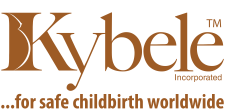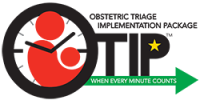Article by Simon Millar and Gordon Yuill
Armenia is a landlocked, mountainous country in the South Caucasus region of Eurasia. A former republic of the Soviet Union, Armenia is a democratic nation-state with an ancient and historic cultural heritage. The Kingdom of Armenia became the first state in the world to adopt Christianity as its religion in the early years of the 4th century, reputedly 301 AD. Armenians also have their own unique alphabet invented by Mesrob Mashtots in 406 AD. The last thirty years have seen many woes in the country, with 25000 people losing their lives in the devastating earthquake in 1988 in the region of Gyumri. Much of that rebuilding was left unfinished due to the turbulence as the country left the Soviet Union in 1991 and became engulfed in a regional war for the next two years. Many of the people we worked with began their careers in this turmoil. Recovery has been a long slow process.
Following on from our visits in 2006 and 2010 we met again with our local champion Dr Ashot Amroyan. He leads the anesthesia service for the Maternity unit at Shengavit hospital, one of the four major hospitals in the Capital city Yerevan. Our co-host this time was Dr Emil Vadapatyan, an airway expert based at the Kanaker Zeytun Unit. As always the warmth and enthusiasm were overwhelming. Our team of nine was a multinational group of two OBs, a neonatologist and six anesthesiologists. Despite challenges, there are significant improvements and the Armenian government works hard to provide access to healthcare, including free maternity care.
Our visit began with a two day conference. Both days had a good turnout of an attentive audience of neonatologists, obstetricians, anesthesiologists and trainees from these specialties. We presented the state of the art for peri-partum care. There was no need to encourage debate as the delegates participated fully. The hunger for knowledge is clear, the neonatal session ran to three times its allocated time. For the first time during this visit, Dr Gill Hilton conducted simulator sessions for emergency care. This was well received and was a popular session running in parallel with the presentations.
Our team then spent the first week visiting four maternity units in the city. There appears to be much progress, especially in the larger units. We demonstrated regional techniques for pain relief and for cesarean section; we also could guide our colleagues in their own practice through observation and advice. We took the opportunity to reinforce the teaching from the conference again tackling the largest causes of maternal mortality: hemorrhage and preeclampsia. There is some resistance towards analgesia with many doctors believing that because women have managed till now, why interfere in the natural process. Epidural rates of up to 30% where this service is available suggest that women are voting with their feet and that the other units should take notice. The economic improvement has been reflected in improved levels of equipment and drugs.
Unfortunately, airway misfortunes still occur, and we used the opportunity to point out from our own experience and history the reduction in deaths due to anesthesia in our own countries over the years. This is a direct objective, reducing mortality by avoiding general anesthesia. We will also look at airway training as our collaboration develops. The primacy of safety as a health care priority has not yet become mainstream in the medical culture. Once safety becomes a key priority, cause analysis and accurate reporting will follow and at that point, system change can take place.
As part of tackling quality of care and safety we met with the National Armenian Association of Anesthesiologists to begin the process of developing national guidelines for patient care with a particular focus on neuraxial anesthesia and maternity services. By providing a framework that states what is the minimum administrators and clinicians will be encouraged to demonstrate that they are moving towards excellence.
Our second week saw the team split in two to visit the smaller hospitals in the regions. Each of the teams was accompanied by one of our local champions, becoming part of the team, demonstrating and teaching as one of us.


